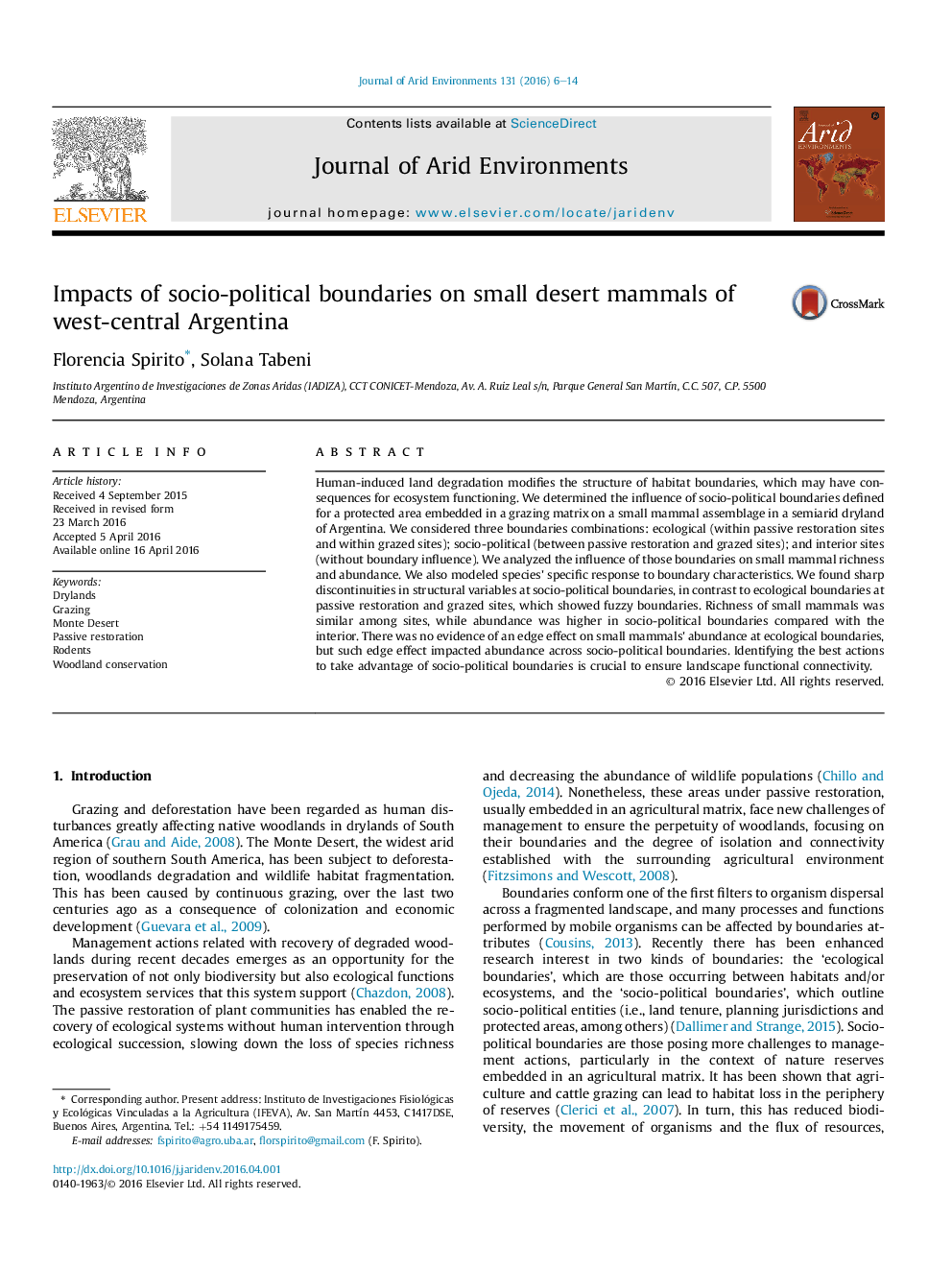| کد مقاله | کد نشریه | سال انتشار | مقاله انگلیسی | نسخه تمام متن |
|---|---|---|---|---|
| 4392720 | 1618228 | 2016 | 9 صفحه PDF | دانلود رایگان |
• Ecological boundaries are less contrasting and fuzzier than socio-political boundaries.
• Ecological boundaries, both under restoration and grazing, were not perceived by rodents.
• The abundance of rodents was higher in socio-political boundaries.
• There was evidence for an edge effect on small mammal at socio-political boundaries.
Human-induced land degradation modifies the structure of habitat boundaries, which may have consequences for ecosystem functioning. We determined the influence of socio-political boundaries defined for a protected area embedded in a grazing matrix on a small mammal assemblage in a semiarid dryland of Argentina. We considered three boundaries combinations: ecological (within passive restoration sites and within grazed sites); socio-political (between passive restoration and grazed sites); and interior sites (without boundary influence). We analyzed the influence of those boundaries on small mammal richness and abundance. We also modeled species' specific response to boundary characteristics. We found sharp discontinuities in structural variables at socio-political boundaries, in contrast to ecological boundaries at passive restoration and grazed sites, which showed fuzzy boundaries. Richness of small mammals was similar among sites, while abundance was higher in socio-political boundaries compared with the interior. There was no evidence of an edge effect on small mammals' abundance at ecological boundaries, but such edge effect impacted abundance across socio-political boundaries. Identifying the best actions to take advantage of socio-political boundaries is crucial to ensure landscape functional connectivity.
Journal: Journal of Arid Environments - Volume 131, August 2016, Pages 6–14
